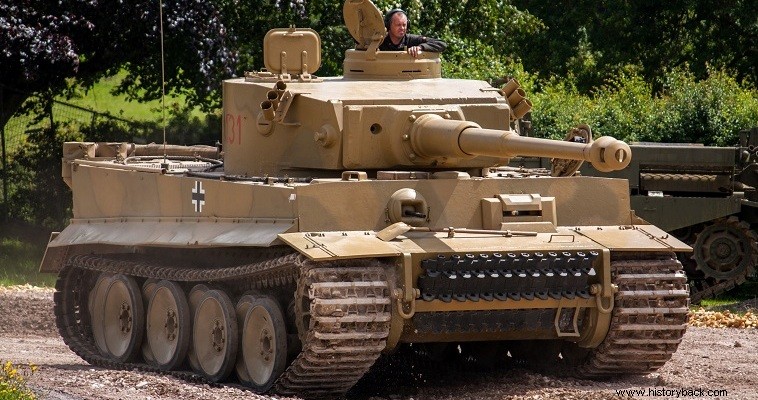
The Tiger I battle tank (Panzerkampfwagen VI, Tiger I (H1), Sd.Kfz. 181) was built in Kassel. The tank was ready in February 1943 and was transported to Tunisia between March and April 1943. It was the 1st tank of the 3rd ulama of the 1st division of the 504th Heavy Tank Division. For this he also received the number 131.
On the night of April 20-21, 1943, the Germans launched a counter-attack against the Allies near Tunis. Two Tiger tanks along with other tanks and infantry attacked the Jebel Jaffa pass. One of the Tigers was claimed to be 131. The Germans attacked at dawn and the battle lasted several hours.
The Tiger was hit by the 6-pounder guns of the British Churchill tanks of the 4th Company of Company A of the 48th Royal Tank Regiment. A projectile struck the Tiger in its gun barrel and ricocheted into the turret ring. The tower could no longer rotate. The same projectile wounded the ship's driver and machine gunner and destroyed the radio.
A second round hit the Tiger's gun elevation mechanism. A third hit the gunner's hatch and shrapnel entered the turret. After this the crew abandoned the chariot, carrying the wounded with them. The largely intact chariot fell into the hands of the British. It was the first tank of its type to be owned by the British and was thoroughly tested.
A rumor had circulated that Winston Churchill had ordered the capture of a Tiger intact for examination. According to some, unconfirmed, sources the mission was undertaken by Major Douglas Linderdahl and the "victim" was the 131st.
However the real story was revealed just a few months ago. The Tiger hit by the British tanks on 21 April was not 131. The real 131 was brought to a standstill on 24 April 1943 at the so-called Point 174 by the cooperation of Churchill tanks and infantry of the 2nd Battalion Sherwood Foresters.
The 131 was repaired with spare parts from damaged Tigers and thoroughly tested while also being shown to King George V and Winston Churchill. The tank was sent to Britain in October 1943 and was displayed as a trophy in towns and villages before being used for intensive trials. The chariot was transferred to the Chariot Museum in 1951.
In 1990 it underwent a radical modernization to make it operational. It was fitted with an engine from a Tiger II tank and fitted with an automatic fire extinguishing system. 131, the world's only working Tiger I tank returned to the museum in 2003. Restoration work was completed in 2012. The tank "starred" in the 2014 film Fury playing… Tiger.
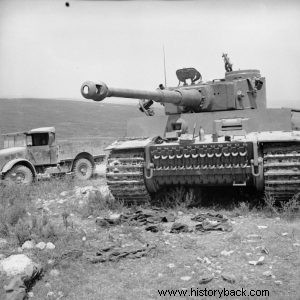
The chariot after its abandonment in Tunisia.
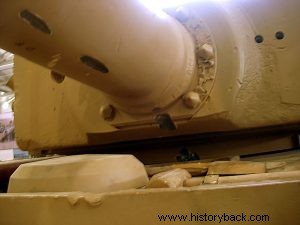
The damage marks on the Tiger 131.
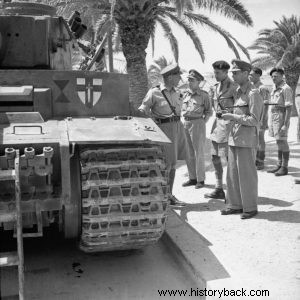
King George of Britain inspects the captured chariot.
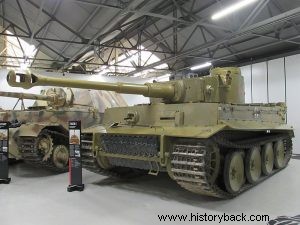
Tiger 131 at the Bovington museum in England.
